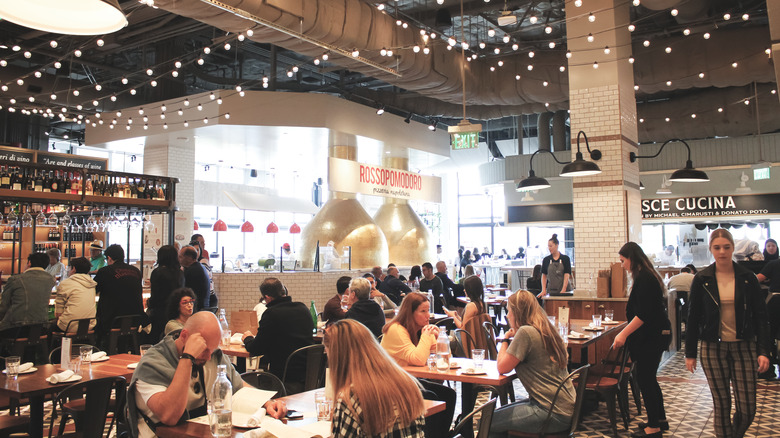The Concept Of Food Courts Has Probably Been Around Way Longer Than Malls
If you've ever been to a mall, chances are you've eaten at a food court. Maybe you didn't intend to — in the U.S., only about 7 % of shoppers seek out a food court in particular — but there's no denying they're helpful when hunger hits. And even though food courts today are closely associated with the mall culture of the 20th century — and restaurants like Sbarro that changed mall food courts forever — the concept behind food courts actually predates modern malls by millennia.
In ancient Rome, the largest market, called the Market of Trajan, was five stories tall. And although many food vendors sold raw ingredients like herbs and meat, plenty of stalls — not unlike today's food courts — were dedicated to different styles of prepared foods like breads, porridge, and vegetables. And one of the oldest still-operating food destinations is the Grand Bazaar in Istanbul, which dates back to the 15th century and still, to this day, offers a variety of unique and traditional dining experiences.
Eating with other people is central to human history — mall or not
In the grand scheme of history, mall food courts are new — but eating alongside shopping, as ancient bazaars demonstrate, is not. Even in modern times, some of the first mall-esque eateries were located in department stores such as Marshall Field's in Chicago and Wanamaker's in Philadelphia.
Conceptually, eating with other people is a powerful social connector and an important window into the prevailing social norms of a given time period. Family meals, for example, became more common in evenings than middays during the Industrial Revolution as people worked outside the home; around World War II, they took on a patriotic meaning.
Mall dining reflects this pattern, too: It emerged in the late 20th century, as car-centric malls transformed into Americans' primary public spaces and pushed our culture toward greater consumerism. The first fully enclosed indoor shopping mall in the U.S. opened in Minnesota in 1956, and the first modern food court appeared in either New Jersey or Toronto about 20 years later.
And even though plenty of nostalgic food court restaurants have disappeared over the years, the idea behind shopping and dining together remains strong. The spirit of the mall food courts of our childhood lives on in food halls — like the first African food hall in the world — which tend to prioritize local chefs and culture. As human beings, we've been eating together for centuries; mall food court or not, we'll continue to do so.

